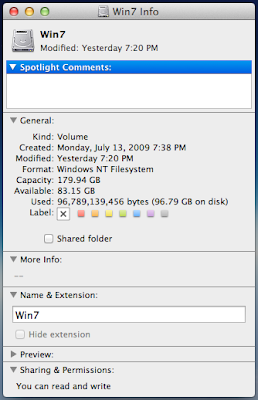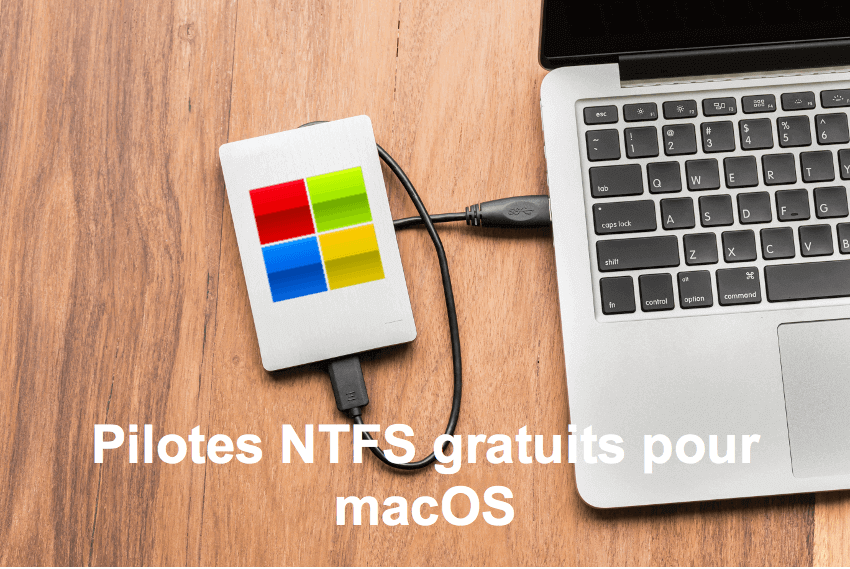Open, edit, copy, move, or delete files stored on Windows NTFS-formatted USB drives on your Mac. When you get a new Mac, it’s only able to read Windows NTFS-formatted USB drives. To add, save, or write files to your Mac, you need an add-on NTFS-driver. Microsoft NTFS for Mac by Tuxera is easy-to-use software that makes this possible.
Use external USB drives previously formatted in Windows
Use the same external USB drives no matter what you use – Windows PCs or Macs. Microsoft NTFS for Mac by Tuxera adds full read and write capability for Windows NTFS-formatted drives.
Peace of mind for your precious moments. Our market-leading NTFS driver stores your videos, pictures, important documents, and other files intact and uncorrupted.
- FUSE (Filesystem in Userspace) is an open-source software interface that extends the file handling capabilities of the Mac OS, with support for NTFS and many other file systems. The CentreStack Mac Client relies on FUSE to mount the cloud drive among other things. Some users have also reported FUSE errors while using a Mac through a remote session.
- FUSE for macOS allows you to extend macOS's native file handling capabilities via third-party file systems. It is a successor to MacFUSE, which has been used as a software building block by dozens of products, but is no longer being maintained.
- Microsoft NTFS for Mac by Paragon Software provides blazing fast, unlimited read/write access to Microsoft NTFS hard drives, SSDs or thumb drives formatted for Windows computers! A no-brainer upgrade for those installing macOS 10.14 Mojave, Paragon NTFS for Mac remains the best cross-platform utility money can buy, especially now that it plays.
Mac OS X supports a handful of common file systems—HFS+, FAT32, and exFAT, with read-only support for NTFS. It can do this because the file systems are supported by the OS X kernel.
Microsoft NTFS for Mac by Tuxera provides fast, sustained file transfer speeds with our smart caching technology. That means less time waiting for files to save or copy between your external drive and Mac.
Our software is the only NTFS driver on the market to include support for NTFS extended attributes. You also get Tuxera Disk Manager, a companion app that makes it easy to format, check, and repair NTFS drives. Plus, NTFS for Mac works conveniently with dual boot or virtual machine set-ups.
Supported platforms: Mac OS X 10.4 (Tiger), 10.5 (Leopard), 10.6 (Snow Leopard), 10.7 (Lion), 10.8 (Mountain Lion), 10.9 (Mavericks), 10.10 (Yosemite), 10.11 (El Capitan), 10.12 (Sierra), macOS 10.13 (High Sierra), macOS 10.14 (Mojave), macOS 10.15 (Catalina) – and coming soon, macOS 11.0 (Big Sur)
Supported hardware: Intel, PowerPC Mac, and coming soon, Apple Silicon
Works in both 32-bit and 64-bit kernel modes

All NTFS versions supported
Create NTFS partitions
Create NTFS disk image
Verify and repair NTFS volumes
Smart caching for high-performance read/write
Automatic translation of file names
Native extended attributes
Seamless data exchange when dual booting Windows and macOS

Easy file handling when running Windows through a virtual machine
...Once installed you can forget about it. It’ll do all the work in the background and not bug you about this and that, it just works.Damien Zander, AppDucate

I truly appreciate the customer-first service and, obviously, great products Tuxera provides.Brian from CO, USA
...It just works. Every time. I'm a developer by trade, and I can usually find fault in anything I use. I have nothing negative to say about NTFS for Mac.Patrick from OH, USA
It made the scariest part of going from PC to Mac go away.Shaun from CA, USA
...It works beautifully and completely transparently.David Weiss, Director/Editor/Colorist
...The perfect solution for any Mac user who needs simple and fast read and write access to files stored on NTFS formatted partitions on a Mac.Sergiu Gatlan, Softpedia

Mac Ntfs Software
We’ve got answers! Our comprehensive FAQ will walk you through everything you need to know.
Go to Support| Developer(s) | Tuxera Inc. |
|---|---|
| Stable release | |
| Written in | C |
| Operating system | Unix-like, Haiku |
| Type | |
| License | Dual-licensed GNU GPL/Proprietary[citation needed] |
| Website | www.tuxera.com/community/open-source-ntfs-3g/ |
NTFS-3G is an open-sourcecross-platform implementation of the Microsoft WindowsNTFS file system with read/write support. NTFS-3G often uses the FUSEfile system interface, so it can run unmodified on many different operating systems. It is runnable on Linux, FreeBSD, NetBSD, OpenSolaris, illumos, BeOS, QNX, WinCE, Nucleus, VxWorks, Haiku,[1]MorphOS, Minix, macOS[2] and OpenBSD.[3][4] It is licensed under the GNU General Public License. It is a partial fork of ntfsprogs and is under active maintenance and development.
NTFS-3G was introduced by one of the senior Linux NTFS developers, Szabolcs Szakacsits, in July 2006. The first stable version was released on February 21, 2007, as version 1.0. The developers of NTFS-3G later formed a company, Tuxera Inc., to further develop the code. NTFS-3G is now the free 'community edition',[1][failed verification] while Tuxera NTFS is the proprietary version.
Features[edit]
NTFS-3G supports all operations for writing files: files of any size can be created, modified, renamed, moved, or deleted on NTFS partitions. Transparent compression is supported, as well as system-level encryption.[5] Support to modify access control lists and permissions is available.[6] NTFS partitions are mounted using the Filesystem in Userspace (FUSE) interface. NTFS-3G supports hard links, symbolic links, and junctions. With the help of NTFS reparse point plugins, it can be made to read chunk-deduplicated files, system-compressed files, and OneDrive files.[7] NTFS-3G provides complete support and translation of NTFS access control list (ACL) to POSIX ACL permissions. A 'usermap' utility is included to record the mapping from UIDs to Windows NT SIDs.
NTFS-3G supports partial NTFS journaling, so if an unexpected computer failure leaves the file system in an inconsistent state, the volume can be repaired. As of 2009, a volume having an unclean journal file is recovered and mounted by default. The ‘norecover’ mount option can be used to disable this behavior.[8]
Performance[edit]
Benchmarks show that the driver's performance via FUSE is comparable to that of other filesystems' drivers in-kernel,[9] provided that the CPU is powerful enough. On embedded or old systems, the high processor usage can severely limit performance. Tuxera sells optimized versions of the driver that claims to have improved CPU utilization for embedded systems and MacOS.[10]
The slowness of NTFS-3G (and FUSE in general) on embedded systems is attributed to the frequent context switching associated with FUSE calls. Some open-source methods provided to reduce this overhead include:[11]
- The underlying FUSE layer has an option called
big_writesto use larger blocks when writing. Using a larger block means fewer context switches. This is in fact a solution recommended by Tuxera.[12] A patch is available to use an even larger block.[13] - There is also a Linux kernel option called
lazytimeto reduce the writes on file access. - Synology Inc. uses a modified NTFS-3G on their NAS systems. It replaces the ntfs-3g inode caching
CACHE_NIDATA_SIZEwith a different mechanism with unsure benefit. (It also includes an alternative Security Identifier translation for the NAS.)
Fuse Ntfs Mac High Sierra
History[edit]
- NTFS-3G forked from the Linux-NTFS project on October 31, 2006.
- On February 21, 2007, Szabolcs Szakacsits announced 'the release of the first open-source, freely available, stable read/write NTFS driver, NTFS-3G 1.0.'
- On October 5, 2009, NTFS-3G for Mac was brought under the auspices of Tuxera Ltd. and a proprietary version called Tuxera NTFS for Mac was made available.[14]
- On April 12, 2011, it was announced that Ntfsprogs project was merged with NTFS-3G.[15]
- NTFS-3g added TRIM support in version 2015.3.14.
See also[edit]
References[edit]
- ^ abc'STABLE Version 2017.3.23 (March 28, 2017)'. Tuxera. Tuxera. 2017-03-23. Retrieved 2017-03-23.
- ^NTFS-3G for Mac OS X ('Catacombae')
- ^'OpenBSD adds fuse(4) support for adding file systems in userland'. OpenBSD Journal. 2013-11-08. Retrieved 2013-11-08.
- ^'ntfs_3g-2014.2.15 – FUSE NTFS driver with read/write support'. OpenBSD ports. 2014-01-05. Retrieved 2015-02-14.
- ^NTFS-3G FAQ
- ^NTFS-3G: NTFS Driver with Ownership and permissions
- ^André, Jean-Pierre (March 1, 2019). 'NTFS-3G: Junction Points, Symbolic Links and Reparse Points'. jp-andre.pagesperso-orange.fr.
- ^'NTFS-3G 2009.2.1 changelog'. Archived from the original on 2009-03-23. Retrieved 2012-09-10.
- ^Comparing NTFS-3G to ZFS-FUSE for FUSE Performance
- ^Performance at Tuxera
- ^Gothe, Markus. 'On Linux NTFS Performance'. Retrieved 3 October 2019.
- ^'NTFS-3G Questions'. Tuxera.
Workaround: using the mount option “big_writes” generally reduces the CPU usage, provided the software requesting the writes supports big blocks.
- ^Wang, M. 'linux - Disadvantages of ntfs-3g `big_writes` mount option'. Unix & Linux Stack Exchange. Retrieved 3 October 2019.
- ^NTFS-3G for Mac OS X is now Tuxera NTFS for Mac
- ^Release: NTFS-3G + NTFSPROGS 2011.4.12
External links[edit]
Ntfs Fuse For Mac High Sierra
